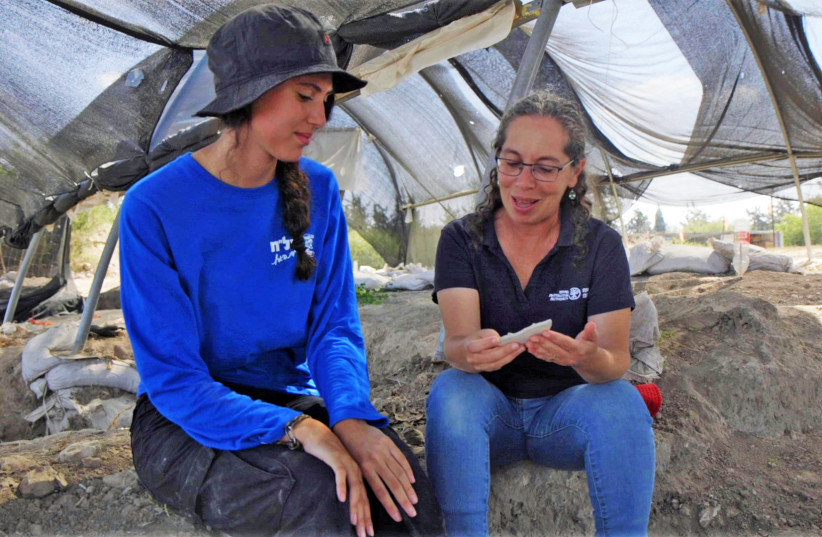Ancient ‘magic mirror’ discovered in northern Israel by youth leader
A 1,500-year-old “magic mirror” from the Byzantine period was discovered by a 17-year-old Israeli taking part in a Young Leaders’ Survival Course at the Usha archaeological site in northern Israel, the Israel Antiquities Authority announced on Thursday.
Aviv Weizman, the youth leader who found the mirror, was taking part in a 90-km survival trek from Mount Meron to Mount Hermon as part of the Education Ministry’s Shelah Young Leaders’ Survival Course. During the trek, the young leaders participate in archaeological digs at sites located around the country.
While taking part in a dig directed by the Israel Antiquities Authority archaeologist Hanaa Abu Uqsa Abud at Usha, a site near Kiryat Ata, Weizman spotted an unusual pottery shard sticking out of the ground between the walls of a building.
Weizman showed the sherd to Dr. Einat Ambar-Armon, director of the Israel Antiquities Authority Northern Education Center, who identified it as the plaque of a “magic mirror.”
What is a magic mirror?
“The fragment is part of a ‘magical mirror’ from the Byzantine period, the 4th–6th centuries CE,” explained Navit Popovitch, Israel Antiquities Authority curator of the classical Periods. “A glass mirror, for protection against the Evil Eye, was placed in the middle of the plaque: The idea was that the evil spirit, such as a demon, who looked in the mirror, would see his own reflection, and this would protect the owner of the mirror. Similar mirror plaques have been found in the past as funerary gifts in tombs, in order to protect the deceased in their journey to the world to come.”
 Dr. Einat Ambar-Armon explains what the ”magic mirror” is to Aviv Weizman, who found the mirror. (credit: EMIL ALADJEM/ISRAEL ANTIQUITIES AUTHORITY)
Dr. Einat Ambar-Armon explains what the ”magic mirror” is to Aviv Weizman, who found the mirror. (credit: EMIL ALADJEM/ISRAEL ANTIQUITIES AUTHORITY)“The participation of the pupils in the archaeological excavations deepens their feeling of belonging to the country and its heritage,” said Eli Shayish, director of the Education Ministry’s Shelah and Land of Israel Studies.
“During the week-long trek, the young leaders discovered additional finds, including pottery jars, coins, decorated stone fragments, and even a water aqueduct,” Eli Escusido, director of the Israel Antiquities Authority, added. “History, usually taught in the classroom, comes to life from the ground. A pupil who uncovers a find in the course of an excavation will never forget the experience. There is no better way to connect the youth to the country and the heritage.”
Saar Ganor, coordinator of the project on behalf of the Israel Antiquities Authority, explained that “this find embellishes the two-way contribution of the cooperation between the Israel Antiquities Authority and the Education Ministry’s Shelah Project: At the same time, uncovering the country’s past, and also providing the youth with a personal empowering experience, connecting them to their roots.”





Comments are closed.